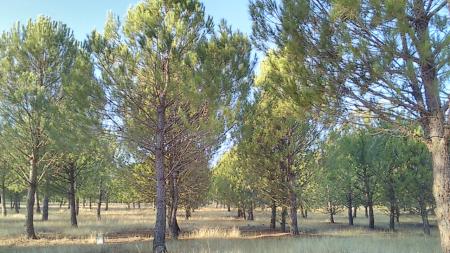
Objective:
The aim is to present a methodology that allows the optimal management of Pinus pinea stands to be determined from an economic perspective when both cone and timber production are considered. Thus, a simulation-optimisation method that implements the stochastic masting model together with an optimisation algorithm would help forest managers to optimise stand management under different price scenarios and market conditions.
Hence , the challenge is to integrate a cone yield model into a simulation-optimisation system which is capable to predict expected cone harvests and seed yields in a certain year, based on the climatic conditions of previous years.
Context:
Pinus pinea is one of the most characteristic species of the Mediterranean. Its main economic importance lies in the production of pine nuts, a gourmet nut, although its timber is also used, and the pine forests provide further ecosystem services such as soil and water protection as well as landscape. Stone pine is characterised by the masting habit of its cone yield, depending on the climate in previous years. Integrating masting as stochastic process in forest management planning remains a challenge. A cone yield model exists that is able to predict expected cone harvests and seed yields, although it is difficult to implement in medium-term forest management planning.
Contacts:
María PASALODOS, mpasalodos@hotmail.com, http://www.inia.es
Further information:
Pasalodos-Tato, M., Pukkala, T., Calama, R., Cañellas, I., & Sánchez-González, M., 2016. Optimal management of Pinus pinea stands when cone and timber production are considered. European Journal of Forest Research, 135(4), 607-619. https://doi.org/10.1007/s10342-016-0958-7